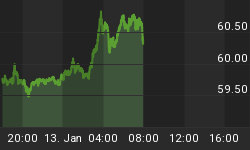America is trying to win a race of technological dominance over China, but the education system isn’t exactly playing along, and increasingly, it’s up to the corporate world to fill in the gaps.
U.S. employers face serious skill shortages in several industries including health care and science and technology, with some reports claiming that as many as 500,000 tech jobs go unfilled each year, and the U.S. Labor Department saying for a decade starting in 2015 there will be an estimated 1 million computing jobs without applicants to fill them.
The Computing Technology Industry Association (CompTIA) estimates that 1.8 million new tech jobs will be created by 2024 and that even more will open up when baby boomers retire. At the same time, America’s institutions of higher education are only pumping out about 28,000 computer-science graduates with bachelor’s or master’s degrees each year, Wired reported, citing figures from Deloitte.
The answer for corporations? Kids.
U.S. businesses have recently begun training primary and high school students with the skills needed in the market. Or, more to the point—they’re training them with the skills they need them to have to fill jobs that are increasingly hard to match with capable applicants. And they’re starting as young as kindergarten.
The initial inspiration really took shape in 2010, with IBM.
IBM thought up a six-year program called P-TECH as a solution to the growing tech-skills gap in the marketplace. Related: UK Stocks Bounce Back From Worst Selloff In Years
Students are enrolling for grades 9 to 14, earning simultaneous high school and associate’s degrees in science, tech, engineering or math-related fields. The model combines free public high school with free community college courses, allowing students to graduate in six years or less with an Associate’s Degree in a high-demand skill.
IBM first tried out the P-Tech model working with a high school in Brooklyn and the City University of New York, and they had some helpful PR from President Barack Obama, who mentioned P-Tech in his 2013 State of the Union address, noting that “students will graduate with a high school diploma and an associate degree in computers or engineering…We need to give every American student opportunities like this.”
Less than a year later, IBM announced that its P-Tech model had spread to 40 schools around the nation.
"There's a war for talent across all our competitors. We know we're going to need a lot of different pathways to bring talent in," said Jennifer Ryan Crozier, president of the IBM Foundation.
IBM’s isn’t an isolated case, or an isolated need.
Companies like Microsoft, Cisco, General electric, ConEdison, as well as healthcare system and manufacturing associations have also stepped into the ‘build-your-own’ labor pool ring. In all, more than 400 companies have partnered with 79 public high schools across the country to offer the P-Tech program.
As Wired magazine so poignantly put it late last year, conventional higher-education institutions “largely operate at a 19th-century pace trying to keep up with the fast-changing demands of 21st-century employers”.
Microsoft, too, took matters into its own hands and ended up facilitating the rapid creation of an entirely new data analytics degree program at Eastern Washington University.
Related: Chinese Police Bust $1.5B Crypto Gambling Scheme
From a generational perspective, the timing is important. Baby Boomers are moving out of the workforce, leaving opportunities for Millennials and then Generation Z to take on higher levels of responsibility.
And the general consensus seems to be that these programs are about to get an ambitious boost. There is a fair amount of optimism surrounding those Generation Z-ers (otherwise known as ‘post-Millennials’) aged 15 to 20 who have started enrolling in the P-Tech program. It is anticipated that they will want to work more and be more interested in technology.
That’s fortuitous since they will soon rule the workforce with a work ethic many millennials have been accused of missing—willing to work nights and weekends.
Most of Generation Z have used the Internet since a young age, and they are generally comfortable with technology and with interacting on social media.
In the end, it may be corporate America that saves education—out of sheer necessity.
By Fred Dunkley for Safehaven.com
More Top Reads From Safehaven.com:

















